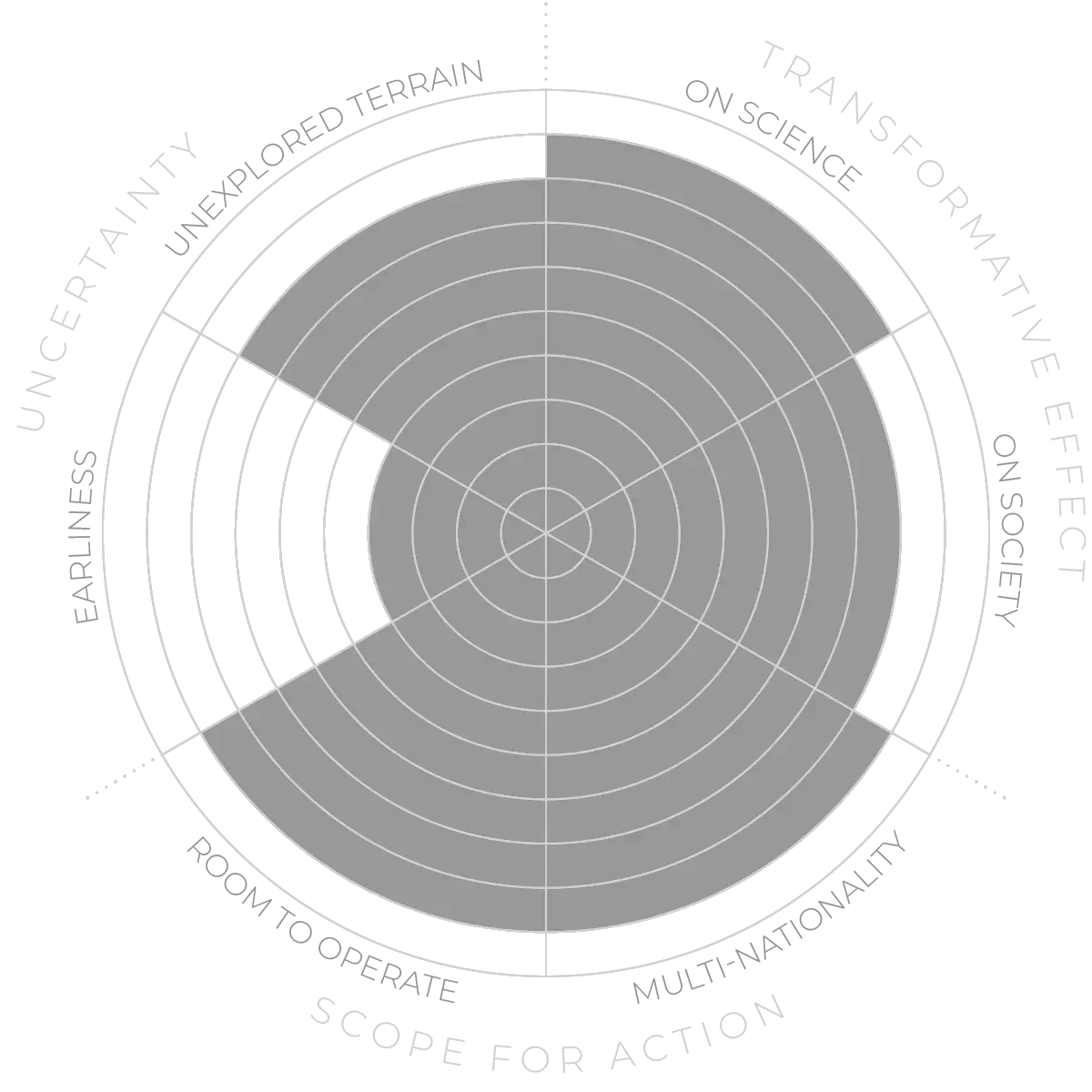Future Horizons:
10-yearhorizon
The fungal family tree is filled in with known unknowns
25-yearhorizon
Understanding of the unknown unknowns progresses
Furthering research on fungi will require more model organisms. Although most fungi are difficult if not impossible to culture in the laboratory, their DNA can be separated from their symbionts and identified using metagenomics, and editing their genes with CRISPR should make them culturable. Their interaction with other organisms can be elucidated with new imaging advances.
Even in some well-characterised species, between 20 and 30 per cent of genes and gene clusters are either unknown or only hypothetically associated with human disease, and need to be better characterised. Pangenome approaches will illuminate biochemical pathways, including those that underpin disease associations such as the (currently controversial) link between Aspergillus sydowii and lung cancer.3
Fungal biobanks and seed-bank-like repositories could help decode the relationship between genotype and phenotype in the same way that biobanks of genes have helped research.4 Building and maintaining culture collections are also important tasks if we are to retain archival knowledge of diverse fungal species, many of which are dying in the mass extinction — and to understand what spurs fungal evolution and extinction.
Opportunities from fundamental fungal biology - Anticipation Scores
The Anticipation Potential of a research field is determined by the capacity for impactful action in the present, considering possible future transformative breakthroughs in a field over a 25-year outlook. A field with a high Anticipation Potential, therefore, combines the potential range of future transformative possibilities engendered by a research area with a wide field of opportunities for action in the present. We asked researchers in the field to anticipate:
- The uncertainty related to future science breakthroughs in the field
- The transformative effect anticipated breakthroughs may have on research and society
- The scope for action in the present in relation to anticipated breakthroughs.
This chart represents a summary of their responses to each of these elements, which when combined, provide the Anticipation Potential for the topic. See methodology for more information.



